No trip to Mexico is complete without a visit to at least one ancient Mayan ruin. Of course, if you can see four Mayan Ruins in the Yucatan Peninsula—that’s even better!
One of the greatest civilizations of Mesoamerica, Mayans have inhabited Mexico and Central America since 1800BC.
Ancient Mayan culture is revered for its advanced hieroglyph writing, architectural feats, and impressive astrological and mathematical knowledge (which produced a sophisticated calendar system).
Mayans worshiped hundreds of gods, with a different god ruling over various aspects of their life. Mayans also believed in life after death, and that existence was part of a circular, never-ending cycle.
While the ancient Maya empire was destroyed many years ago, the Maya community in Mexico is still strong, with some 7 million people keeping their traditions and customs alive. This includes speaking Mayan languages!
Today you’ll find Mayan influences scattered across Mexico and Central America. While the jungle has overtaken much of the glory of the empire’s past, crumbling Maya archaeological sites are uncovered regularly.
If your Mexico vacation is based in Cancun or Tulum, here are four must-visit Mayan ruins in the Yucatan Peninsula you won’t want to miss!
Insider tip: Before heading out to explore the many Mayan archaeological sites in the area, visit The Maya Museum in Cancun. It’s a riveting encounter with Maya culture that helped us get much more out of our ruin visits.
Table Of Contents
4 Must-See Mayan Ruins in the Yucatan Peninsula
1. Ek Balam
Ek Balam is “new” to the list of must-see ancient Maya ruins to explore, archeologists having only begun restoration in 1997. However, the history of Ek Balam is anything but new; Mayans are thought to have occupied it sometime between 100 BC and 300 AD, and the civilization was at its height in the Late Classic period, 600-900 AD
Only the center of Ek Balam has been excavated. Of this, the Acropolis Temple is the most impressive at 95 feet tall. Visitors can climb the six levels to the top of the Acropolis for a fantastic view. Though it’s a bit of a trek—and not so good if you’re scared of heights—this is definitely the best way to appreciate the temple layout. Don’t miss the rare and original sculptures under the thatched roof on your way up.
Fun Fact:
The two hills viewed from the top of the Acropolis are actually two buildings yet to be excavated.
What We Love About Ek Balam:
Because the restored portion is relatively small, and the site itself is relatively new, Ek Balam doesn’t see nearly as many tourists as other ancient Mayan archeological sites. No hawkers are trying to sell you mass-produced souvenirs, no fellow tourists bumping into you as you wander the grounds. It was as though we were transported back to the ancient Mayan civilization, with only the occasional sunbathing iguana to distract us from our reverie.
The ancient artwork and calligraphy that you can still see on the walls are impressive, and the views from the top of the pyramid exceptional.
Things To Know Before You Visit Ek Balam:
The ruins of Ek Balam are located north about 30 minutes north of Valladolid. It only takes about 1-2 hours to explore this Maya ruin as the main points of interest are all quite compact. There is one restroom outside the site, and limited refreshments and food. There is a nearby cenote you can visit, though we did not. Ek Balam is open daily from 8am-5pm; foreigners pay 413 pesos to enter. Plan to arrive early in the morning or late afternoon to avoid the blaring mid-day Mexico heat.
2. Chichen Itza
Chichen Itza is perhaps the most popular of Mayan temples. It was first brought to attention in the book, “Incidents of Traveling the Yucatan,” and today is considered one of the ‘New 7 Wonders of the World‘. Chichen Itza is consistently crowded and feels extremely touristy, primarily due to the rows of vendors selling memorabilia. But like most attractions, Chichen Itza is touristy for a reason. If you’re prepared for that, you’ll likely find this Maya archeological site maintains a dazzling appeal.
Chichen Itza is a fantastic example of the post-classic Mayan civilization. Rather than a pointed top to the main temple (like Ek Balam and characteristic of the Classic Period), you’ll find a flat roof. Though Chichen Itza likely thrived nearly 600 years after Ek Balam, it became one of the largest Mayan city-states.
Chichen Itza is quite expansive, and it’s easy to spend a long time exploring the different buildings. That said, three attractions are particularly noteworthy:
El Castillo
This is the broad central pyramid; it’s impossible to miss at 98 feet high, and you’ve probably seen photos of it before. The temple wasn’t always that tall, though. Mayans would typically make their temples larger by superimposing one upon the other. Inside El Castillo is actually a smaller pyramid with a statue to the god Chac Mool. Unfortunately, it is no longer possible to go inside the pyramid to see it.
El Castillo has 365 steps, one for each day of the year. There are serpent heads at the base of the steps. During the equinoxes, a shadow appears on the stairs, creating the snake’s image from top to bottom—an absolutely fascinating portrayal of ancient Mayan astronomical knowledge.
The Ball Court
The ball court at Chichen Itza is the largest and best-preserved in the Americas. The games not only served as entertainment but also as a ritual for the underworld. The rules are not known precisely, but most think that players used their hips to hit a 10lb rubber ball through the stone hoops on the side of the court. However, judging by the height of the circles at Chichen Itza, there were likely variations to these rules. Competition must have been intense as losers of the game were often put to death, a sacrifice for the gods.
The Cenote Sagrado
There is no shortage of cenotes to see in the Yucatan peninsula, but this is definitely one of the most famous. The Cenote Sagrado is a place of pilgrimage for Mayans, and historically a place to conduct sacrifices during droughts.
Fun Fact:
You’ll likely see tourists clapping their hands around El Castillo. This is because the ruins’ acoustics are so that you’ll hear on echo, said to mimic the sound of a quetzal.
What We Love About Chichen Itza:
Chichen Itza was the principal ceremonial center of the Yucatan. There is much to discover at this one Maya site (this sacred city covers some six square miles), and our overall knowledge of Mayan culture grew dramatically from the visit. Also, Chichen Itza made us think of The Emperor’s New Groove, which is always fun.
Things To Know Before You Visit Chichen Itza:
Arrive early. Chichen Itza gets exceptionally crowded in the afternoon. Know you can no longer climb to the top of El Castillo as a safety precaution. Admission is from 8am to 5pm and costs 486 pesos. The fee includes entrance to an evening light and sound show at 7 or 8pm (check the schedule); a unique acoustics and serpent shape is demonstrated, a phenomenon that occurs naturally with the setting sun during the twice-annual equinox.
A guided tour is well worth the investment as Chichen Itza is so vast and boasts a compelling (if haunting) past that’s best uncovered with a local expert. Even if you arrive early, you’ll probably find yourself battling the Mexican sun as it takes a solid couple of hours to do Chichen Itza justice. Don’t forget your water bottle and sunscreen.
3. Coba
While Coba wasn’t our favorite Maya ruin in Mexico, it is unique because it boasts the tallest Mayan pyramid in the Yucatan peninsula, coming in at a staggering 130 feet. You can climb all 120 stairs to the top for a fantastic view of the temple grounds, an intricate network of ancient roads, and snapshots of the vast, jungle-strewn landscape.
The name Coba means ‘water stirred by the wind’; it is named for its prime location amongst two lagoons. The bulk of the temple was constructed during the Classic Period, though it’s possible the temple was occupied by Mayans as late as the Spanish arrival. While you’re walking through the grounds, take note of the ancient roads, called sacbe. They were constructed of white rock, which would reflect moonlight at night, serving as a sort of flashlight. The streets also demonstrate that Coba was an important trading link between Mexico’s coast and the ancient cities inland.
Fun Fact:
Most of our knowledge about Mayan culture and temples came from our brilliant tour guide at Coba with Alltournative. A lot of the information we learned was directly applicable to the other Maya temples we visited. The two-hour Coba trip included an excursion to a traditional Mayan village, where we adventured through more cenotes, participated in a traditional Mayan ritual led by a shaman, and enjoyed a typical Mayan feast. The interaction with the Mayan community on this tour was memorable and enlightening.
What We Love About Coba
If you visit Coba with Alltournative, you can feel confident that you are giving back to the local Mayan population that still lives in the Yucatan. Unfortunately, many Mayans today live in poverty. One local told us that all-inclusive resorts send buses to Mayan communities to pick up the men and transport them to the hotels, where they work 12-hour days for just a few dollars. They return on the weekends to spend time with their families, but the income barely provides for them. Alltournative offers a solution to create fair, livable wages; they go into the Maya communities and work with the locals, creating eco-friendly attractions without changing the integrity of the environment. They then employ the locals to run the facilities.
The sustainable development of the Maya communities is supported by agreements made with community groups or ejidos, where the cities are committed not only to achieving social and economic growth but also to avoiding logging and hunting in the areas tourists visit beyond.
After participating in the ‘Coba Maya Encounter,’ we can say that Alltournative appears to be living up to this high standard. If you want to learn more about Mayan culture’s lasting legacy, this is definitely the tour for you!
Things to Know Before You Visit Coba
Coba doesn’t get as crowded as Chichen Itza, but as we’ve said before (and will say again!), arrive in the morning or late afternoon to avoid the intense heat while climbing all those stairs. There are bikes available to rent, which we recommend as it is quite a long way to access the main temple. Or take a bici taxi.
The tour with Alltournative costs $139 and includes transportation, lunch, Coba admission, guide, and adventure activities. The fee for Coba alone is 75 pesos; the site is open from 8am-5pm.
4. Tulum
The Mayans sure knew where to build their temples. Tulum is located on a dramatic cliff overlooking the Caribbean Sea—and it is simply gorgeous. By our visit to Tulum, we were a bit Mayan-templed out, but this Maya archeological site in the Yucatan was worth making the trek for, if not for the views alone.
Tulum was a walled city, likely a temple, trading port, and navigational guide. From the main shrine, El Castillo, there are small windows that line up perfectly with a gap in the barrier reef offshore. Boatmen could line up their canoes with the windows to provide safe incoming through the beach. Additionally, the Temple of Frescoes is one of the most unique Mayan attractions of all the temples; the frescoes are a magnificent depiction of Mayan artwork. It is still possible to see some of the original colorings of the pictures. Much of what archeologists know about Mayan temple décor comes from this specific Maya ruin.
Fun Fact:
Bring your bathing suit! There is a beautiful beach at the base of the temple. It gets hot walking around the grounds, so you’ll definitely want to cool off here.
What We Love About Tulum
I mean, do we even have to say it? Look at that view. Admission is 80 pesos. The coastal ruin is open from 8am to 5pm daily. You can breeze through the site in 30 minutes if you just want to take in the view, or easily spend an entire day learning about the temple and enjoying the Caribean beach. There is an additional fee of 45 pesos if you bring a camera. You can get a transportation service that best suits your needs. However, it is advisable to book a Tulum shuttle service, so you do not need to move with other transport methods from Cancun to Tulum. This type of service usually does not make continuous stops, which is nice to quickly arrive at your destination. We had plenty of time to devote one day to each of the ruins, but if you are up for a long day, it is possible to combine Ek Balam and Chichen Itza into a day trip and Coba and Tulum into another. Finally, try to avoid visiting Maya ruins in the Yucatan Peninsula on Sundays—admission is free to Mexicans, and the temples can get very busy. We were guests of Alltournative for our Coba Encounter. All thoughts and opinions are our own. Things To Know Before You Visit Tulum
How to get from Cancun to Tulum
Have you visited any of these temples? Which one looks the most interesting to you? Any fascinating facts about Mayan culture that you would like to add?


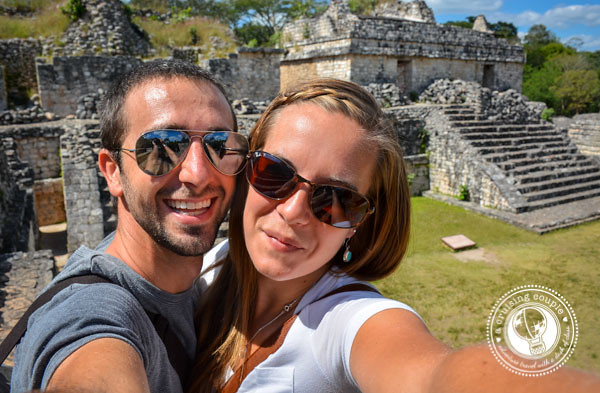

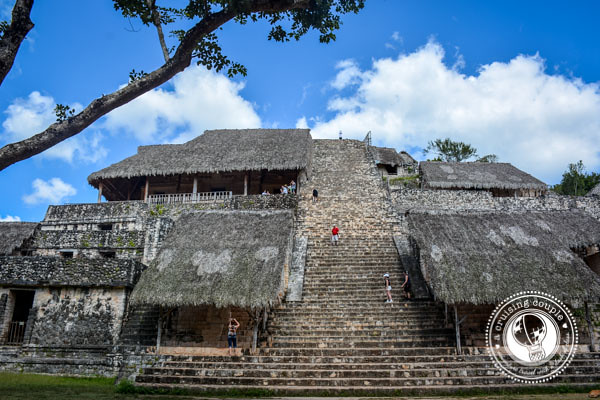
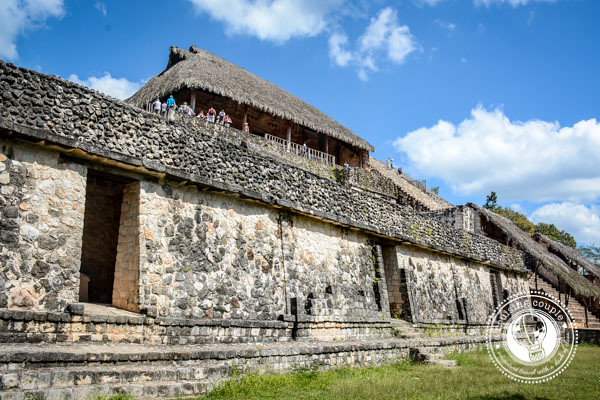




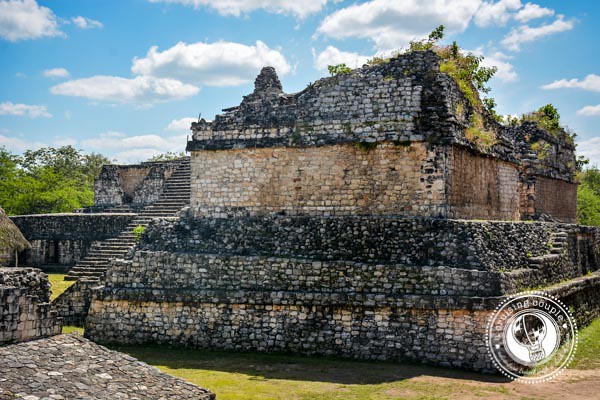


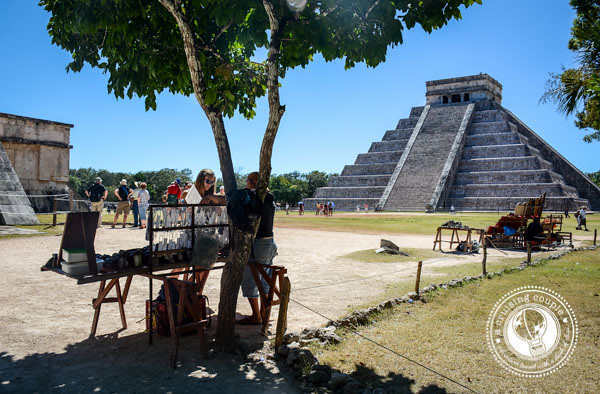

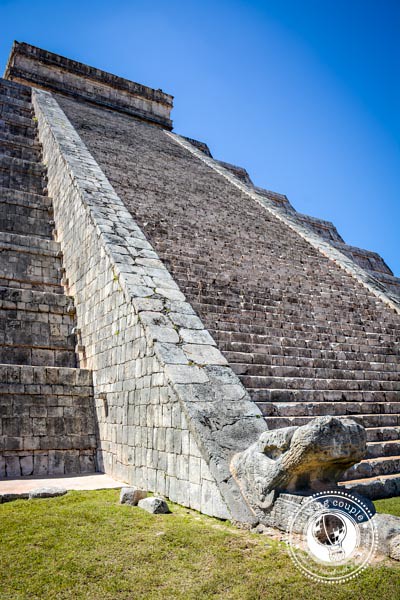
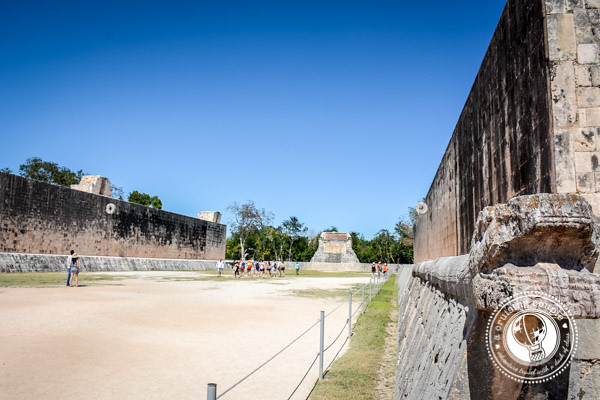
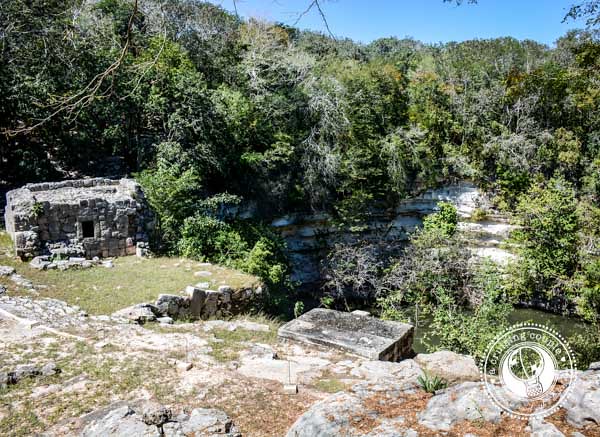



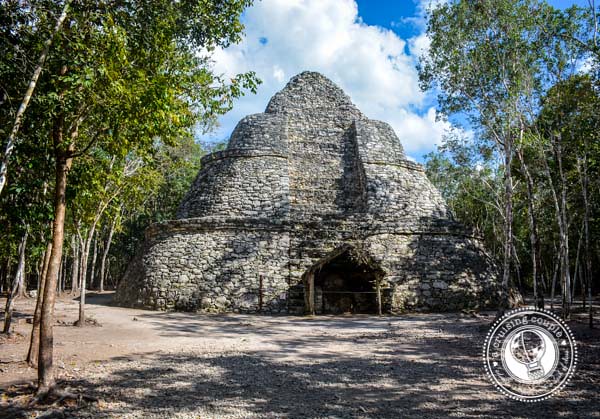


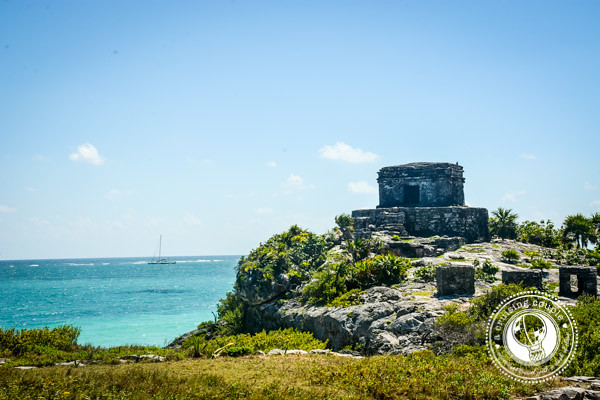







I’ve only seen Chichen Itza and that was a few years ago but I’d love to go back and see the Tulum ruins next time!
Shikha (whywasteannualleave) recently posted…A Teetotaller in a Beer House – The Hofbrauhaus, Munich, Germany
Tulum is quite unique for its location! If I were a Mayan, that’s where I would have been :-)
We visited Chichen Itza and Tulum – both well worh seeing. We went on a tour to Chichen Itza which packed alot into one day but an excellent way to get a taste of a few things. We visited a Mayan village, a cenote, the ruins and Valladolid-a colonial town. The drive there and back was interesting in itself. We visited Tulum on our own- smaller but so incredibly beautiful by the sea.
After this article you have made me want to see Ek Balam, maybe next time!
Glad to hear you made 2 of the 4! Sounds like you really got to see a lot! Ek Balam was my personal favorite. Maybe because it was the first we visited, maybe because we practically had the whole place to ourselves :-)
Where did you stay that you were able to see all those ruins within a few days?
We travelled around the Yucatan over our trip :) We were able to see all these on a trip to Cancun, Tulum and Valladolid.
The Laminai ruins in Beliz are far more impressive than anything I have seen in this part of Mexico. Go to Orangewalk and book with the Jungle River Tours. It is a boat ride up the Nuw River and a guided tour of the ruis. Worth every bit of your time.
I like the sustainable side of visiting Coba, it’s important to know that you are giving it back to the local population I also like about Coba the fact that isn’t as crowed as the others.
Franca recently posted…Impressions of Auschwitz and Its Visitors
We were very impressed to hear about the sustainability efforts during our Coba tour. It’s great to see interest in preserving for the future, not just immediate profits :-)
Loved Casey’s descriptions of the temples in this post. Makes me feel that I went there with you. And Dan’s pictures bring it all to life!! Great blog! Thanks for sharing.
Thanks! Maybe next time you can come along too!!! ;-)
Love this post and Mayan ruins. I have been to Chichen Itza and Tulum. Can’t wait to go back to Mexico to check more ruins (like Palenque and Uxmal).
Ruth recently posted…Los Angelesâ Ethnic Neighborhoods: Chinatown
We didn’t get the chance to check out Palenque or Uxmal, but they look very unique and different from the styles we saw. We’ll have to add these to our list for next time :-)
I’ve never been to any of the ruins in Mexico. But, I would say the 4th one would be the one I would want to see.
Joshua Dent recently posted…Why I Write & Do Comedy
Tulum is pretty special for it’s location. You could spend the whole day there wandering through the ruins and hanging out at the white sand beach below!
Cool! When I was 16, I went on a family holiday to Cancun and we visited Chichen Itza and Tulum as day trips from there, which I really enjoyed, so I’d definitely be interested to visit the other two next time. Actually, when I visited Chichen Itza, you were still allowed to climb El Castillo, which afforded you stunning views of the jungle from it, and it was easy to forget you were surrounded by loads of other tourists!
Sam recently posted…Why Would We Visit Budapest in January?
That’s super cool you were there before El Castillo was roped off! I can only imagine the view would make you feel like a king up there :-)
Great post! I’m still kicking myself for not going to Ek Balaam when I was in Valladolid in December.
I was also at Chichen Itza when you could climb El Castillo (1992 before the highway!). And my pictures from Tulum the same trip have Italians from a cruise ship offshore lounging all over the ruins in bathing suits.
Highly recommend Uxmal and the smaller Pu’uc Route ruins if you go back. And, Merida and Campeche. About 60% of the population of Merida is Maya.
Eva Grodberg recently posted…The Library And The Giraffe: A Tale Of Two Top NYC Hotels. Part Two
Thanks Eva! We would love to visit Uxmal and Pu’uc if we return! And Merida! Definitely so much to see in that part of Mexico! Definitely try to make it to Ek Balam if you go back- I think you would love it!
These are awesome – I love how well-preserved they are. Stuff was built to last back then ;)
Andrea recently posted…The World’s Worst Drivers Are In Houston
Seriously! It’s a bit mind-boggling how some of the ruins can still be so intact.
Such a nice read.. it brings back a lot of fond memories as Mexico (and Yucatan in specific) was the place where we started our life of full time travel! :)
Awww.. how I miss Mexico, I really wanna go back for the landscapes, the people and, OBVIOUSLY, the food!!! :D
Zara @ Backpack ME recently posted…The Faces of HOLI
That’s awesome! So happy we were able to bring back a few nice memories for you :D And yes. The food!!! Haha I think it’s good we left when we did so I didn’t consume all the avocados in the country … ;P
Judging by photos and description, Tulum would be my favourite one! It’s so interesting and historical!
Agness recently posted…Ways To Get Across Australia With Little To No Money
Thanks Agness! Great choice- Tulum is stunning.
Very great shots! It shows the amazing history behind those ruins. Hope to visit the place soon.
ben recently posted…Havasu Falls – An Uplifting Experience
Thank you! Hope you visit soon as well!
Absolutely love your pictures! Heading to Mexico in June will need to track down some of these sites!
Jen recently posted…Cuenca Side Trip – El Cajas National Park
That’s exciting! I hope you get the chance to check out a few, if not all :-)
Hi, I’m going there in january (actually 31st december) in Cancun. First time in Mexico and the Yucatan. I’m also planning a visit to Tikal if I have enough time, only two weeks… I hope it will be enough. Never heard of EkBatam but I’ll try to go there. Nice pictures of Tulum and thanks for the infos.
Mat recently posted…Code promo chapka assurance: 5% de réduction !
Went to Chichen Itza on a family trip. Our guide told us that we should climb El Castillo because in two weeks they were going to shut it down for tourists to climb. We feel so lucky that we were able to climb it, but I think it is probably a good idea to keep people off of it. We’ve also been to Tulum and I think everyone should see these sites. Amazing in so many ways. I would love to go back to Chichen Itza and also see some of the other sites you mention.
Great picks, I’ve visited all of these temples, and I think Ek Balaam was my number one also! It was tough to get to (had to haggle a taxi, no collectivo or public transit) but it was nearly tourist-free. AND you can climb the pyramid (unlike Chichen Itza).
I’m hoping to try two in the southern Yucatan: Kohunlich and Chacchoben. Not sure if you’ve been there yet.